🏞️An Introduction to One of Peru’s Most Scenic Adventures
If you’re dreaming of visiting Machu Picchu and want a route that blends raw nature, spiritual landscapes, and authentic adventure, the Salkantay Trek is one of the most incredible choices you can make. Often referred to as one of the best alternative treks to the Inca Trail, it takes you on a multi-day journey through majestic snow-capped mountains, misty cloud forests, and lush subtropical valleys—culminating in the arrival at one of the world’s most breathtaking archaeological sites.
But what exactly is the Salkantay Trek? How difficult is it? What makes it different from the Inca Trail? And why is it gaining so much popularity among travelers from all over the world?
Let’s dive into the details.
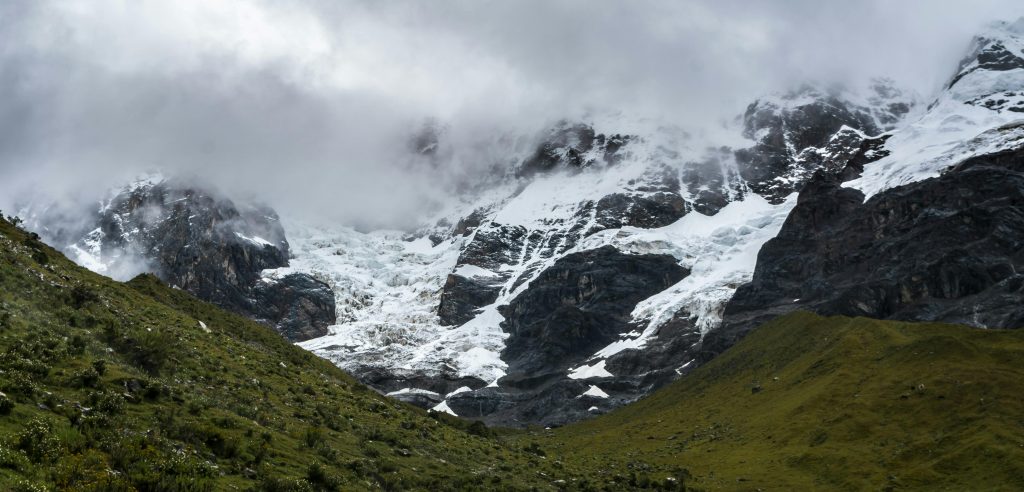
🌄 1. A Trail of Transformation
The Salkantay Trek is not just a physical hike—it’s a spiritual and cultural journey. The route follows an ancient Andean path once used by indigenous communities to reach sacred sites. Today, it offers a rich blend of scenery, ecology, and local traditions, making it ideal for adventure travelers, photographers, culture seekers, and nature lovers alike.
Named after Mount Salkantay (6,271 meters / 20,574 feet)—one of the highest peaks in the Peruvian Andes—the trek showcases the wild beauty of the region. “Salkantay” comes from the Quechua word Salqa Antay, meaning “Savage Mountain” or “Uncivilized Mountain.” For Andean civilizations, it was considered a powerful Apu (mountain spirit or deity).
🧭 2. Where is the Salkantay Trek?
The Salkantay Trek is located in the Cusco region of Peru, to the northwest of the city of Cusco. The trail typically begins in Mollepata or Soraypampa, two small Andean villages accessible by car from Cusco (approximately 3 to 4 hours). From there, the route ascends through high-altitude mountain passes, descends into tropical valleys, and finally arrives in Aguas Calientes, the base town from which travelers access Machu Picchu.
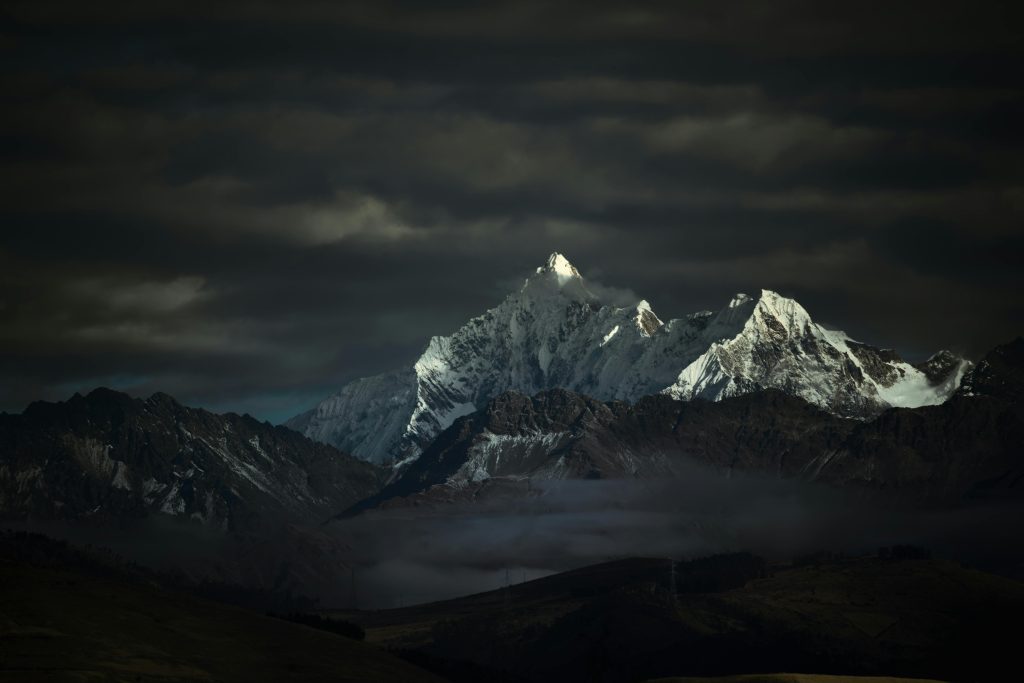
🗓️ 3. How Long is the Trek?
The classic Salkantay Trek takes 5 days and 4 nights, although shorter and longer versions exist (ranging from 4 to 6 days). Here’s a brief outline of the standard 5-day itinerary:
- Day 1: Cusco – Mollepata – Challacancha – Soraypampa – Lake Humantay – Salkantay — distance 12 km
- Day 2: Soraypampa -Salkantay Pass – Huayrapunku – Chaullay – Salkantay — distance 22 klm
- Day 3: Chaullay – Playa Sahuayo — Hidroelectrica – Aguas Calientes town hostel distance — 25 km
- Day 4: Pueblo of Aguas Calientes – KM 104 Chachabamba – Wiñayhuayna – Sun Gate – Machupicchu – Hostel pueblo Aguas Calientes
- Day 5: Hostel Pueblo Aguas Calientes – Machupicchu
Each day offers a variety of landscapes, from alpine tundra to rainforest, making the trek feel like multiple journeys in one.
🏔️ 4. The Salkantay Mountain
The soul of this trek is the awe-inspiring Nevado Salkantay. Towering at over 6,200 meters, its snowy peaks dominate the early part of the journey. Many trekkers describe the moment they reach Salkantay Pass (4,650 meters / 15,255 feet) as the highlight of the entire route.
From this point, you get panoramic views of surrounding glaciers, jagged cliffs, and deep valleys—an emotional and physical high that most will never forget. For many hikers, this is one of the most rewarding experiences of their lives.
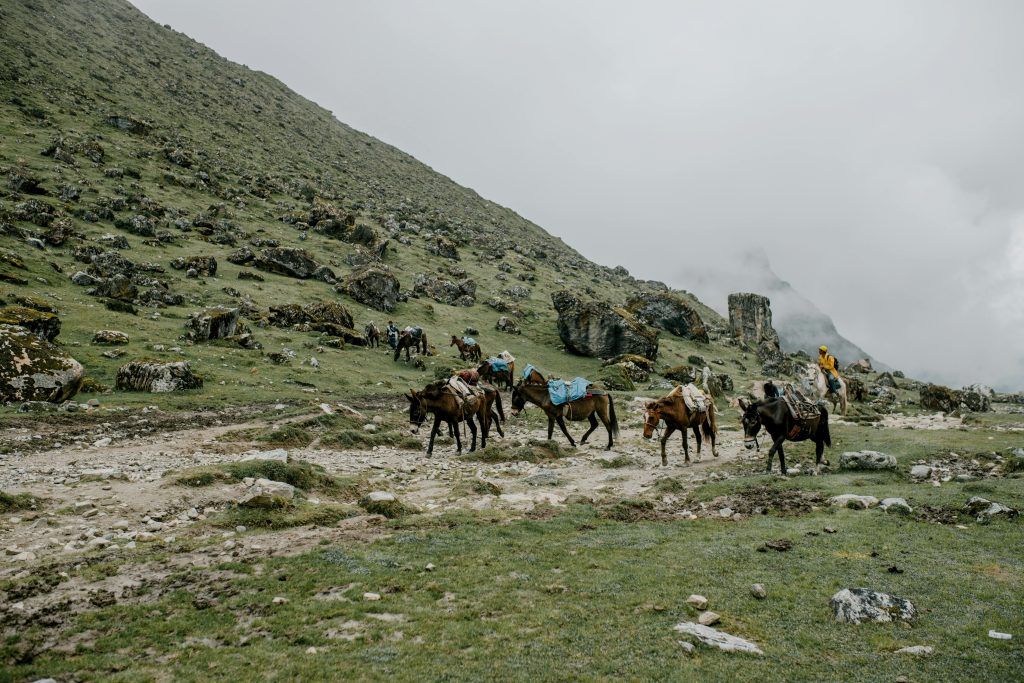
🌿 5. What You’ll See on the Salkantay Trek
One of the reasons this trek is so loved is the incredible diversity of landscapes. Here are just a few highlights you’ll encounter along the way:
- 🏔️ Humantay Lake: A stunning turquoise lake set against the glacier of Mount Humantay. A must-see on Day 1.
- ❄️ Salkantay Pass: The highest and coldest part of the trek, with snow and ice-capped peaks.
- 🌴 High Jungle: After the pass, you descend into warm, green valleys filled with waterfalls, orchids, and birds.
- 🛕 Llactapata Ruins: A lesser-known Inca archaeological site with a rare distant view of Machu Picchu.
- 🏞️ Coffee and Banana Plantations: In Lucmabamba, you can visit local farms and even taste freshly harvested coffee.
- 🌇 Aguas Calientes: The final stop before ascending to Machu Picchu, full of restaurants, shops, and hot springs.
Each day presents a new microclimate and a fresh perspective of the Andes.
🏛️History, Culture & Comparison with the Inca Trail
Now that we’ve explored the geography and natural beauty of the Salkantay Trek, let’s dive deeper into the historical significance, cultural richness, and how it compares to the more famous Inca Trail.
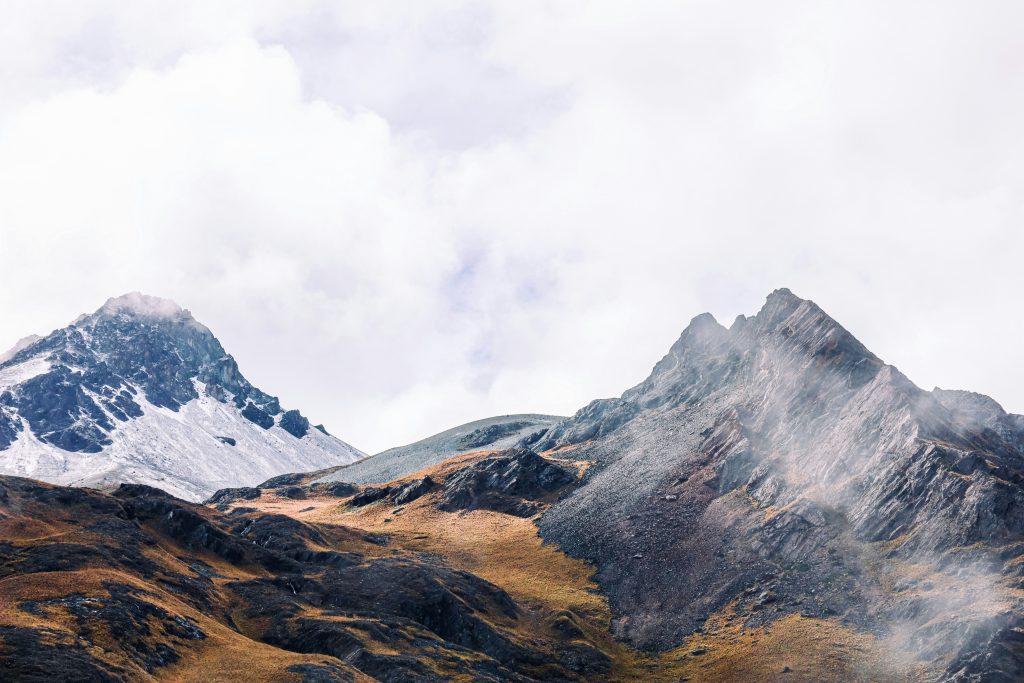
🕰️ 1. Historical and Spiritual Significance
Though not as archaeologically famous as the Inca Trail, the Salkantay route is deeply embedded in the spiritual and cultural traditions of the Andes. Mount Salkantay itself has been worshiped for centuries by indigenous communities as a sacred mountain spirit (Apu). In Inca cosmology, Apus were guardians of the Earth, considered alive and responsible for protecting local people and landscapes.
The path you walk is believed to be part of an ancient network of trails that connected different regions of the Inca Empire. This network, known as the Qhapaq Ñan, once extended over 30,000 kilometers, linking what is now Colombia, Ecuador, Peru, Bolivia, Chile, and Argentina.
Although there are fewer Inca ruins along the Salkantay Trek than on the Inca Trail, the cultural and energetic presence is very real. You’ll pass through Quechua-speaking villages, traditional farming communities, and regions where ancient rituals and beliefs still thrive.
🛤️ 2. How is it Different from the Inca Trail?
Many travelers find themselves torn between the Salkantay Trek and the Inca Trail. Here’s a detailed comparison to help you understand the differences and decide which suits your style better:
📊 Salkantay Trek vs Inca Trail: Side-by-Side Comparison
| Feature | Salkantay Trek | Inca Trail |
|---|---|---|
| Length | ~74 km (46 miles) | ~42 km (26 miles) |
| Duration | 4–5 days | 4 days |
| Highest Elevation | 4,650 m (Salkantay Pass) | 4,215 m (Dead Woman’s Pass) |
| Physical Difficulty | Moderate to challenging | Moderate |
| Permits | Not required | Must be booked months in advance |
| Crowds | Fewer people | Highly trafficked, especially in high season |
| Archaeological Sites | Few (e.g., Llactapata) | Many (e.g., Runkurakay, Sayacmarca, Wiñay Wayna) |
| Access to Machu Picchu | Via Aguas Calientes | Direct through the Sun Gate (Inti Punku) |
| Cost | More budget-friendly | Generally more expensive |
| Availability | Flexible | Very limited; spots often sell out 6 months ahead |
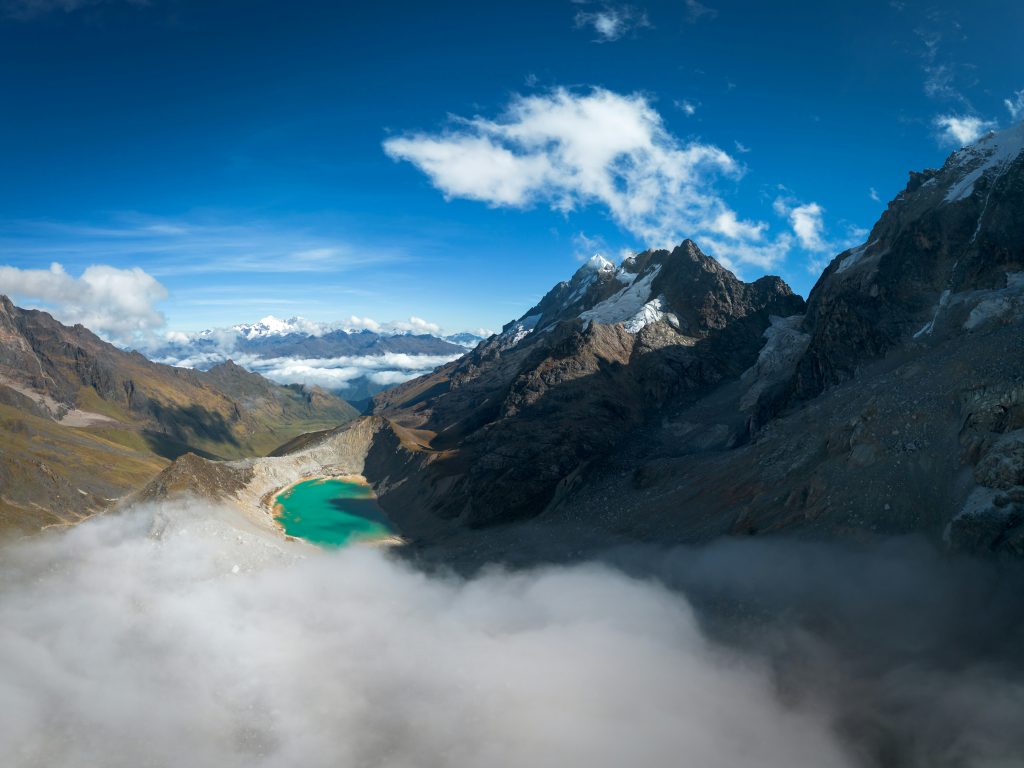
👣 8. Why Choose Salkantay Over the Inca Trail?
While the Inca Trail is iconic for its archaeology and history, the Salkantay Trek stands out for its natural diversity, flexibility, and adventure. Here’s why many travelers are now choosing Salkantay:
✅ No Permits Needed
You don’t have to worry about securing permits months in advance. You can even book the Salkantay Trek a few days before departure, especially in the shoulder seasons.
✅ Greater Variety of Landscapes
From glaciers and alpine lakes to tropical rainforests and coffee farms, the Salkantay Trek offers a broader range of ecosystems in just a few days.
✅ Less Touristy
The Salkantay route tends to be less crowded, which makes the experience more personal, immersive, and peaceful.
✅ More Affordable
The cost of the Salkantay Trek is generally lower, making it more accessible to budget travelers and backpackers.
✅ Ideal for Nature Lovers
If you’re more interested in natural beauty than archaeology, this trek is your perfect match.
🙏 9. Cultural Interactions
One of the most enriching aspects of the Salkantay Trek is the opportunity to interact with local communities. In villages like Lucmabamba and Chaullay, you’ll meet farmers, weavers, and families who live much like their ancestors did—off the land and close to the traditions of the Andes.
Some tours even include hands-on experiences, such as:
- Coffee harvesting and roasting
- Weaving demonstrations
- Andean rituals or coca leaf offerings
These moments help travelers build a deeper connection with the land and its people, beyond just trekking.
🎒What to Expect – Weather, Difficulty & What to Pack
Now that you know the history, culture, and how it compares to the Inca Trail, it’s time to get ready for the real adventure. This section covers everything you need to know about the weather, the difficulty, and what to pack to enjoy the trek to the fullest.
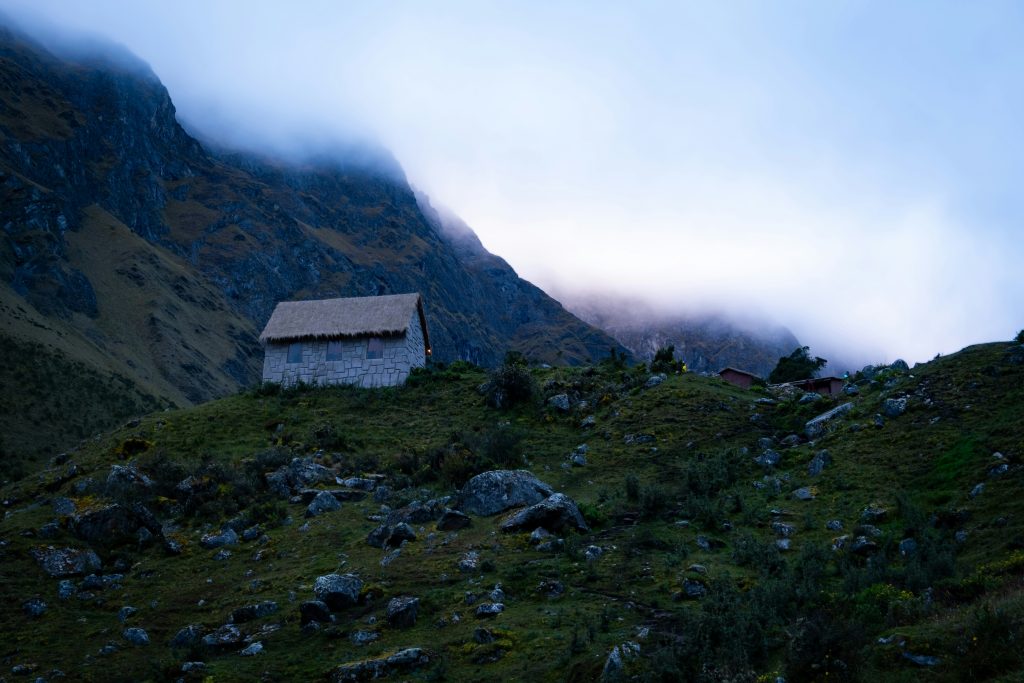
🌦️ 1. Climate and Best Time to Hike
The weather on the Salkantay Trek is as varied as its landscapes. You’ll go from cold glacial heights to warm tropical jungles in just a few days, so you must be prepared for all kinds of conditions.
📅 Seasons:
- Dry season (April to October): The best time to hike. Expect sunny days and clear skies, although nights can be very cold, especially in high-altitude areas like the Salkantay Pass.
- Rainy season (November to March): Higher chances of rain, muddy trails, and clouds that may reduce visibility. However, there are fewer tourists and the landscape is greener.
🌡️ Approximate Temperatures:
| Zone | Day | Night |
|---|---|---|
| High altitude (Salkantay Pass) | 5–15°C | -5 to 0°C |
| Jungle zone (Lucmabamba, Aguas Calientes) | 20–25°C | 10–15°C |
🧗 2. Physical Difficulty: Is the Salkantay Trek Hard?
Yes, it’s a moderately difficult trek, but not impossible. It requires good physical condition, but you don’t need to be an athlete to complete it.
🏔️ Main challenges:
- Altitude: You reach 4,650 m at Salkantay Pass, which can cause altitude sickness if you’re not acclimated.
- Daily duration: Hikes range from 6 to 9 hours per day, especially the second day, which is the most demanding.
- Varied terrain: Includes steep paths, rocky areas, river crossings, and changing weather.
🧘 Tips to prepare:
- Acclimate in Cusco for at least 2 days beforehand.
- Do practice hikes if you’re not used to long distances.
- Drink plenty of water and avoid alcohol a few days before.
- Bring coca leaves or candies to help with the altitude.
🎒 3. What to Pack: The Essentials
Having the right gear makes the difference between an amazing journey and one full of discomforts. Here’s a complete and practical checklist:
🏕️ Trek basics:
- Light backpack (30–50 L)
- Sleeping bag (-10°C rating for dry season)
- Trekking poles (optional but recommended)
- Headlamp or small flashlight
- Water bottle or reusable flask
👕 Layered clothing:
- Quick-dry shirts
- Fleece jackets or thermal coats
- Waterproof jacket
- Trekking pants (light and durable)
- Thermal underwear (especially for nighttime)
- Gloves, hat, and scarf for the cold
👟 Footwear & accessories:
- Waterproof trekking boots (already broken in)
- Sandals or comfy shoes for resting at night
- Wool or trekking socks (3–4 pairs)
🧼 Hygiene & health:
- Toilet paper and personal bags
- Sunscreen and SPF lip balm
- Insect repellent
- Basic first-aid kit
- Water purification tablets
📷 Extras:
- Camera or phone with enough memory
- Power bank or external battery
- Energy snacks (nuts, cereal bars)
- Cash (no ATMs on the trail)
- Passport (required to enter Machu Picchu)
✅ Final Recommendations Before You Go
- Choose an agency with good reviews and certified guides.
- Check what’s included in the tour (meals, entry tickets, return train, lodging).
- Pack your gear sorted by days and weather conditions.
- Get mentally prepared for a physically demanding but incredibly rewarding challenge.